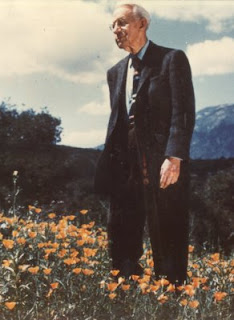Wednesday, March 23, 2011
Plant Profile: Nemophila menziesii Baby Blue Eyes
Nemophila menziesii Baby Blue Eyes get their name from bright blue flowers dotted with black on white centers. Found virtually throughout the state in a diverse setting of California plant communities such as meadows, grasslands, chaparral, woodlands, slopes, and desert washes; Nemophila menziesii is an endemic California wildflower, attractive to bees, butterflies and birds making them an excellent addition to the California native garden.
They are freely self-sowing if planted in a mulch-free environment and are suitable for growing in containers. Typically, Baby Blue Eyes are early bloomers (mid-winter) and have a growth habit under 1 ft in height/width with average water needs. Growing happily in USDA Plant Hardiness Zones 3-10, Nemophila menziesii prefer light soils and dry conditions, but are adaptable and make an excellent front of border plant.
Sow seeds of this California native in full sun on the coast transitioning to filtered sun/part shade inland. Group them with taller-growing spring bloomers such as Layia platyglossa Tidy Tips, Lupinus succulentus Arroyo Lupine, Gilia capitata Globe Gilia and late blooming wildflowers such as Clarkia amoena Farewell-to-Spring for a long-lasting show of California native annuals!
Sunday, March 13, 2011
Theodore Payne: the Man, the Vision, the Legacy
Theodore Payne, arguably known today as the father of California’s native plant movement, was introduced to California native plants at The Royal Botanic Gardens at Kew in England in 1891.
Born in Northamptonshire, England on June 19, 1872 a young Theodore Payne began his career serving an apprenticeship in horticulture for J. Cheal and Sons, a nursery firm in London. After three years, in 1893, Payne completed his contract and traveled to the United States.
Arriving in New York, he traveled to Chicago and visited the World's Columbian Exhibition, shortly thereafter setting out for Los Angeles, California. After arriving in Southern California, he took work picking apricots, before finding a job overseeing the gardens on the ranch of Madame Helena Modjeska in Santiago Canyon. Nestled into the Santa Ana Mountain range in Orange County, it was there that he began his life-long interest in California native plants, exploring the extensive natural areas surrounding the Ranch.
Even in the early years of the 20th century, native vegetation was being lost to agriculture, housing, and ever-increasing construction of infrastructure. Recognizing this was happening at an alarming rate, Theodore Payne began advocating for the use of California native plants in place of the standard fare of exotic species being pushed by the California Dept. of Forestry. He lectured up and down the state on the importance of preserving wild flowers and landscapes native to California, and the preservation of native habitat.
Read more about Theodore Payne’s enduring legacy preserving California’s native plants!
Plan on attending the Eighth Annual Theodore Payne Garden Tour April 9th and 10th 10-4!
Subscribe to:
Posts (Atom)

